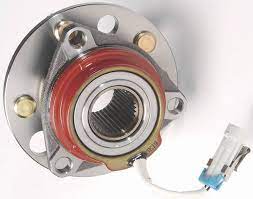Your vehicle’s hub bearings are responsible for helping your wheels stay stable and keep them rotating smoothly. When you hear strange noises or feel vibrations while driving, it could indicate that your hub bearings need to be replaced.
In this blog post, we’ll review some tips you should follow when replacing your rear hub bearings.
Check for Slack in Your Wheels
Before replacing your rear hub bearings, you’ll want to ensure you’ve correctly identified the issue. First, check your wheels for slack by moving them back and forth. If there’s a lot of movement, it might be time to replace your hub bearings.
Gather the Right Tools
Replacing your hub bearings requires some specialized tools. You’ll need a torque wrench, a socket set, and a bearing puller. Make sure you have all the necessary tools before you begin.
Remove the Old Bearings Carefully
Removing the old hub bearings can be challenging, especially if they’ve been in place for a long time. Use a bearing puller to remove the old bearings carefully. Make sure to work slowly and gently to avoid damaging the surrounding parts.
Pack the New Bearings Correctly
Before installing the new hub bearings, you must pack them with grease. Use the right grease for your bearings and pack them correctly to ensure they’ll work correctly.
Tighten the Axle Nut Carefully
While reassembling your rear hub, carefully tighten the axle nut. You’ll want a torque wrench to ensure the nut is tightened to the correct specifications. Please do so to avoid future issues with your bearings.
Test Your Work
Once you’ve reassembled your rear hub, take your vehicle for a test drive. Make sure that everything feels normal and you don’t hear strange noises. If you do, you should double-check your work.
Schedule Regular Maintenance
Regular maintenance is essential for keeping your hub bearings in good condition. Make sure to follow your vehicle’s recommended maintenance schedule and have your hub bearings checked regularly. Catching issues early can help prevent more significant problems down the road.
Why Is Rear Hub Bearing Replacement Important?
The rear hub bearing is critical to any vehicle’s wheel assembly. It functions as a pivot point, allowing for smooth wheel rotation and ensuring proper alignment with the rest of the machinery.
Over time, however, the bearings can wear down and become damaged, compromising the integrity of the entire wheel system. Without proper maintenance or replacement, this can lead to serious safety hazards on the road.
Therefore, it’s incredibly important to keep an eye on the condition of your rear hub bearings and replace them when necessary.
Taking the time to invest in high-quality rear hub bearing replacement parts will improve your vehicle’s performance and ensure that you and your passengers stay safe and secure while traveling.
Final Verdict
Replacing your rear hub bearings requires some specialized tools and knowledge, but with these 7 tips, you can do it safely and correctly. Take your time, work carefully, and follow your vehicle’s recommended maintenance schedule. By doing so, you’ll increase the lifespan of your hub bearings and avoid future issues.
